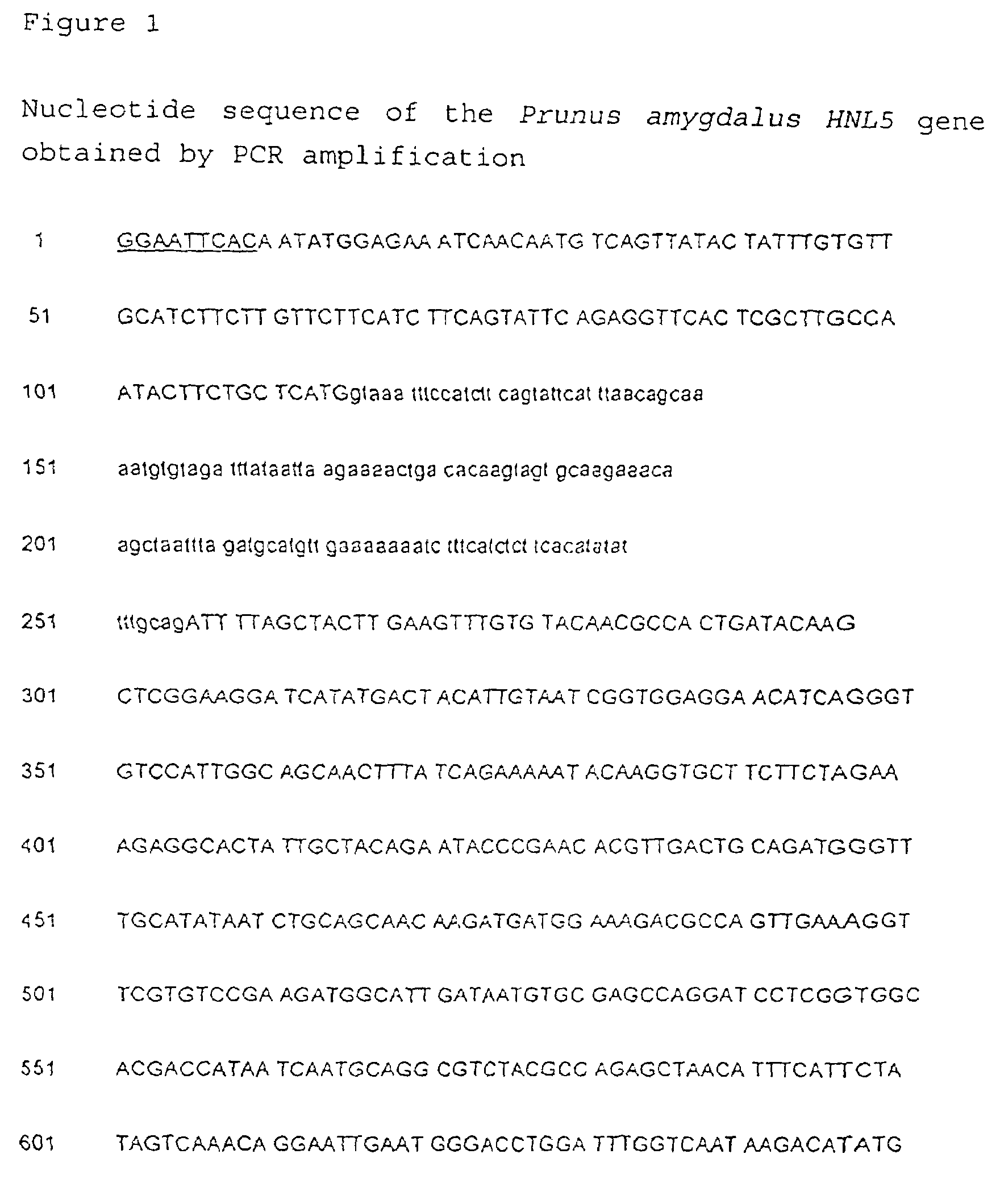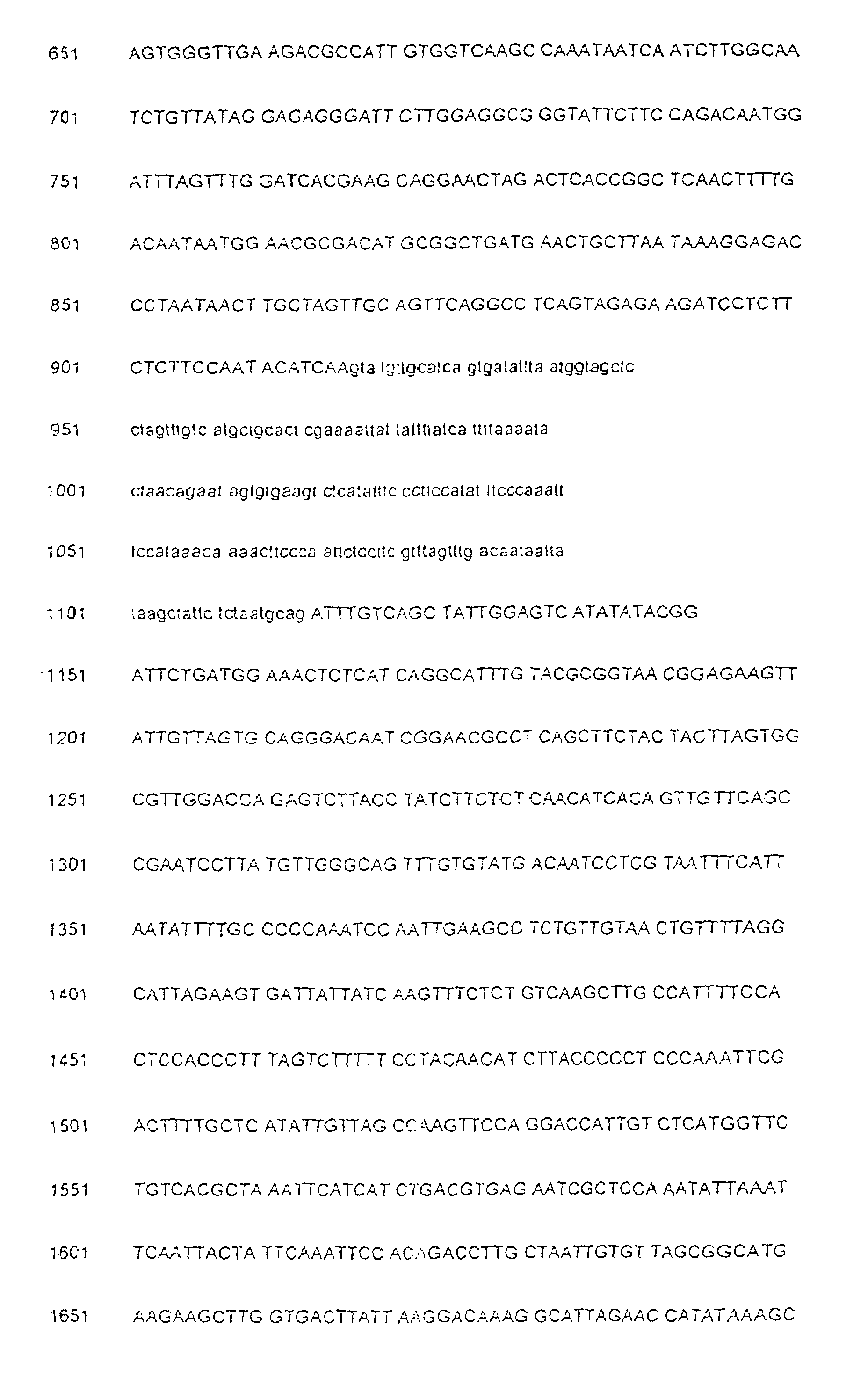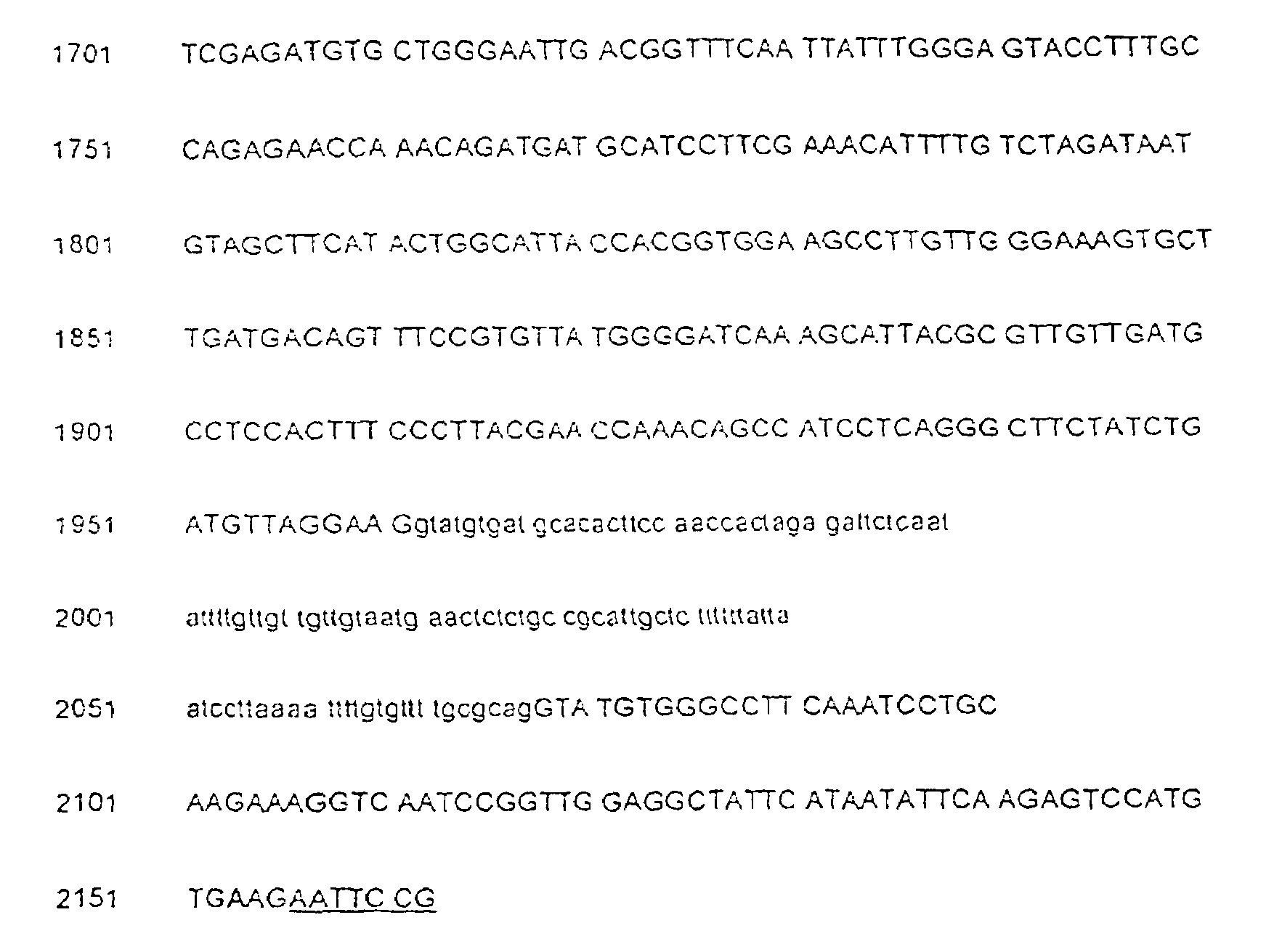Isolated protein having hydroxynitrile lyase activity
a technology of hydroxynitrile lyase and isolated protein, which is applied in the field of isolated protein having hydroxynitrile lyase activity, can solve the problems of insufficient quantities and justifiable costs of almond kernel hydroxynitrile lyase preparations, and no successful (functional) heterologous expression of such a gene has been reported in the specialist literature or patent literature,
- Summary
- Abstract
- Description
- Claims
- Application Information
AI Technical Summary
Benefits of technology
Problems solved by technology
Method used
Image
Examples
example 1
Isolation of Genomic DNA from Almonds (Prunus Amygdalus Kernels)
[0071]Dried almonds (Farmgold, batch number L4532, 1999 harvest) were finely chopped using a knife and frozen in a mortar with liquid nitrogen and ground using a pestle under liquid nitrogen to give a fine powder. 0.1 gram of frozen almond powder was directly admixed with 65° C. warm “breaking puffer” (100 mM NaAc; 50 mM EDTA; 500 mM NaCl, adjusted to pH 5.5; 1.4% SDS and 20 μg / ml RNAse A). After stirring for 15 minutes, the insoluble cellular residues were removed by centrifugation (10 min at 7000 g) and the supernatant was admixed with the same volume of 10 M ammonium acetate and then incubated on ice for 10 min. After centrifugation at 10,000 g for 15 minutes, the supernatant was extracted 2× with phenol / chloroform (1 / 1, phenol equilibriated with 50 mM Tris, pH 8.0). After another extraction with twice the volume of chloroform / isoamyl alcohol (24 / 1), the DNA was precipitated from the supernatant with the same volume ...
example 2
Amplification and Cloning of a Genomic DNA Section of Almond (Prunus Amygdalus) DNA Homologous to Known Rosaceae mdl Genes
[0072]Since it was known that a plurality of hydroxynitrile lyase isoenzymes whose sequences are highly homologous to one another can appear in Prunus species (Hu and Poulton, 1999), gene-specific PCR primers based on sequence homology of the Prunus serotina mdl5 gene and the Prunus amygdalus MDL1 gene (Suelves et al., 1998) were prepared:
[0073]
Primer 1:(SEQ ID No. 1)5′-CGGAATTCACAATATGGAGAAATCAACAATGTCAG-3′Primer 2:(SEQ ID No. 2)5′-CGGAATTCTTCACATGGACTCTTGAATATTATG-3′
[0074]The amplification was carried out in a 50 μl mixture with 1.2 U of “Hotstar” Taq DNA polymerase (Qiagen, Hilden, Germany), with 50 ng of genomic almond DNA as template, in each case 200 ng of primers 1 and 2, 5 μl of a dNTP (2 mM each) mix, all of these in 1×PCR buffer according to the “Hotstar Kit” manual (Qiagen, Hilden, Germany), starting with a denaturation step of 15 minutes at 95° C., fo...
example 3
Sequence Analysis of the Genomic Prunus Amygdalus DNA Fragment Obtained by PCR Amplification with Primers 1 and 2.
[0077]In the region of the PCR-amplified and sequenced DNA section, an open reading frame which is interrupted by 3 introns was found. Said three introns were identified with the aid of the “GT . . . AG” intron consensus sequence. The reading frame starts with an ATG codon at position +13 and ends with a stop codon at position +2151.
[0078]For the coding region, the fragments of positions 13 to 115 (exon I), positions 258 to 917 (exon II), 1121 to 1961 (exon III) and 2078 to 2150 (exon IV) were joined together. The assembled DNA sequence codes for a protein with 559 amino acids and a calculated molecular weight of 61 kDa or 57.9 kDa for an N-terminally processed form. The peptide masses were calculated with the aid of the GCG program package (Genetics Computer Group, Wis., USA). Said protein was denoted PamHnI5.
[0079]The protein sequence derived for the open reading frame...
PUM
| Property | Measurement | Unit |
|---|---|---|
| pH | aaaaa | aaaaa |
| total volume | aaaaa | aaaaa |
| pH | aaaaa | aaaaa |
Abstract
Description
Claims
Application Information
 Login to View More
Login to View More - R&D Engineer
- R&D Manager
- IP Professional
- Industry Leading Data Capabilities
- Powerful AI technology
- Patent DNA Extraction
Browse by: Latest US Patents, China's latest patents, Technical Efficacy Thesaurus, Application Domain, Technology Topic, Popular Technical Reports.
© 2024 PatSnap. All rights reserved.Legal|Privacy policy|Modern Slavery Act Transparency Statement|Sitemap|About US| Contact US: help@patsnap.com










